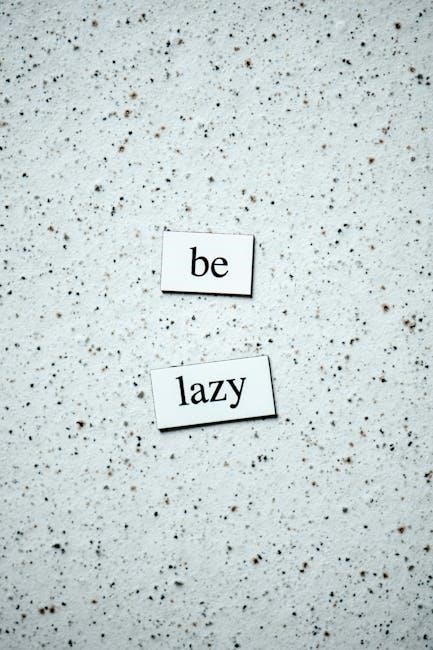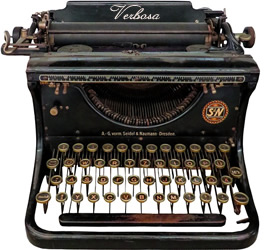A Main Idea Graphic Organizer is a visual tool designed to help students identify and understand the central concept of a text, improving reading comprehension and writing skills effectively.
What is a Main Idea Graphic Organizer?
A Main Idea Graphic Organizer is a visual tool designed to help students identify and organize the central idea of a text. It provides a structured format, often including charts, diagrams, or maps, to visually represent the main idea and its supporting details. This organizer acts as a scaffold for students to gather and connect their thoughts, making complex information more manageable. It is widely used in education to enhance reading comprehension and writing skills. The tool is adaptable for various age groups and subjects, making it a versatile resource for learners. Its simplicity and effectiveness make it a popular choice for teachers and students alike.
Purpose of a Main Idea Graphic Organizer
The primary purpose of a Main Idea Graphic Organizer is to guide students in identifying and understanding the central idea of a text. By structuring information visually, it helps learners distinguish between the main idea and supporting details, enhancing comprehension. This tool also aids in organizing thoughts for writing tasks, making it easier to synthesize information. Additionally, it fosters critical thinking and analytical skills by encouraging students to evaluate how different parts of the text relate to the main idea. Teachers use it to assess understanding and provide feedback, while students benefit from a clear framework to engage deeply with content.
Why Use a Main Idea Graphic Organizer?
A Main Idea Graphic Organizer enhances reading comprehension by visually organizing information, helping students identify key concepts and supporting details effectively.
Importance of Identifying the Main Idea
Identifying the main idea is crucial for effective comprehension, as it allows readers to grasp the central message of a text. By focusing on the primary concept, students can better understand the author’s purpose and retain information more efficiently. This skill also enhances critical thinking, as it requires distinguishing between essential and secondary details. In academic settings, mastering the main idea is fundamental for successful reading and writing, enabling students to engage deeply with material and apply knowledge in various contexts. Graphic organizers are particularly effective tools for this process, providing a structured way to visualize and organize key ideas.
Benefits for Reading Comprehension
Using a Main Idea Graphic Organizer significantly enhances reading comprehension by helping students focus on the central idea and supporting details. This visual tool enables learners to structure information logically, making complex texts more manageable. It fosters active reading habits, encouraging students to engage deeply with the material. By identifying and organizing key points, students improve their ability to summarize and analyze texts. This method is particularly beneficial for visual learners, as it provides a clear framework for understanding relationships between ideas. Ultimately, graphic organizers empower students to approach reading with confidence and clarity, leading to improved academic performance and lifelong learning skills.
Enhancing Study Skills with Graphic Organizers
Graphic organizers are powerful tools for enhancing study skills by providing a structured and visual approach to learning. They help students organize information, making it easier to review and retain. By breaking down complex concepts into manageable parts, graphic organizers promote active learning and critical thinking. They also improve note-taking skills, enabling students to focus on key ideas during lectures or while reading. Additionally, graphic organizers foster better time management by helping students prioritize tasks and ideas. This visual method of learning caters to diverse learning styles, ensuring that all students can engage effectively with the material and develop strong study habits over time.

How to Identify the Main Idea
Identifying the main idea involves understanding the central concept of a text by looking for topic sentences, supporting details, and using context clues effectively.
Understanding the Difference Between Topic and Main Idea
The topic is the general subject of a text, while the main idea is the specific point or message the author conveys about that topic. For example, if the topic is “graphic organizers,” the main idea might be “how graphic organizers improve reading comprehension.” Understanding this distinction helps students focus on the central message rather than just the surface-level subject. Graphic organizers, like Venn diagrams or concept maps, can visually separate the topic from the main idea, making it easier for learners to identify and organize both effectively. This clarity enhances comprehension and critical thinking skills.
Role of Supporting Details in Determining the Main Idea
Supporting details are essential for identifying the main idea, as they provide evidence and explanations that elaborate on the topic. These details help students understand why the main idea is significant. For instance, in a text about graphic organizers, supporting details might include examples of different types, such as Venn diagrams or concept maps, and how they aid in comprehension. By analyzing these details, learners can piece together the author’s central message. Graphic organizers visually highlight these details, making it easier to connect them to the main idea and fostering a deeper understanding of the text.
Using Context Clues to Find the Main Idea
Context clues play a crucial role in identifying the main idea by providing hints within the text. These clues, such as transitional words, repeated phrases, or key vocabulary, help readers infer the central message. For example, in a passage about graphic organizers, phrases like “primary purpose” or “essential function” signal the main idea. By recognizing these clues, students can better understand the author’s intent. Graphic organizers further enhance this process by visually highlighting context clues, enabling learners to connect them to the main idea effectively. This skill is vital for improving comprehension and critical thinking abilities in reading complex texts.

How to Create a Main Idea Graphic Organizer
Creating a main idea graphic organizer involves outlining its structure, selecting appropriate layouts, and using tools like Canvas for customization to meet specific learning needs effectively.
Steps to Design a Main Idea Graphic Organizer
Designing a main idea graphic organizer begins with defining the main idea section clearly. Include sections for supporting details, key terms, and questions. Use visuals like charts or diagrams to enhance understanding. Organize the layout to ensure clarity and logical flow. Customize the organizer based on the text type, such as fiction, informational, or persuasive. Incorporate context clues to help identify the main idea. Add examples or prompts to guide students. Finally, review and refine the organizer to ensure it aligns with learning objectives and is user-friendly for students.
Tools for Creating Digital Graphic Organizers
Popular tools for creating digital graphic organizers include Canvas, which offers customizable templates and a user-friendly interface. MindMeister and Lucidchart are excellent for mind maps and flowcharts. Tools like Piktochart and Canva provide visually appealing designs and templates. Google Jamboard and Padlet enable collaborative creation in real-time. Additionally, specialized apps like Inspiration and Kidspiration offer tailored features for educational purposes. These tools allow educators and students to design organizers that align with specific learning objectives, making the process efficient and engaging. They also support customization, ensuring the organizer meets the needs of diverse learners and text types.
Tips for Customizing Your Graphic Organizer
When customizing a graphic organizer, start by assessing the learning objectives and the type of text or content. Incorporate visual elements like charts, images, or diagrams to enhance understanding. Use colors and symbols to differentiate sections or ideas. For digital organizers, leverage tools like Canva or Piktochart to add interactive features. Ensure the design is flexible to accommodate various learning styles. Align the organizer with specific standards or skills, such as identifying main ideas or comparing concepts. Provide examples and templates to guide students. Regularly seek feedback to refine the design and make adjustments based on student needs and performance.

Common Types of Graphic Organizers for Main Idea
Popular types include Venn diagrams, concept maps, flowcharts, and mind maps, each offering unique ways to visually organize and connect ideas for better comprehension and retention.
Venn Diagrams for Comparing Ideas
A Venn Diagram is a powerful tool for comparing and contrasting ideas, using overlapping circles to visually represent similarities and differences. This organizer is ideal for analyzing relationships between concepts or themes in a text. By categorizing information into intersecting sections, students can identify shared characteristics and unique aspects, helping them understand the main idea more effectively. Venn Diagrams are particularly useful for comparing characters, events, or ideas in fiction and informational texts, making complex information more accessible and engaging. Their visual structure aids in synthesizing information, fostering critical thinking and clarity in identifying the central idea of a passage or topic.
Concept Maps for Visualizing Relationships
Concept Maps are visual tools that use symbols, colors, and images to illustrate relationships between ideas. Starting with a central concept, students branch out to related ideas, creating a web of connections. This organizer enhances understanding by visually linking details to the main idea, making abstract concepts tangible. Ideal for both fiction and informational texts, concept maps help students organize information, identify patterns, and see how ideas interact. Their flexibility allows customization, making them suitable for various learning styles and depths of analysis, ultimately strengthening comprehension and the ability to articulate the main idea effectively.
Flowcharts for Sequential Thinking
Flowcharts are graphic organizers that use arrows and boxes to depict sequences, decisions, or processes. They help students break down texts into chronological events or logical steps, making complex narratives easier to follow. By visually mapping out cause-and-effect relationships, students can identify the main idea by understanding how events unfold. Flowcharts are particularly effective for instructional or procedural texts, enabling learners to track the progression of ideas systematically. This tool enhances critical thinking and organization skills, making it ideal for structuring essays or analyzing plot sequences in fiction, ultimately aiding in the clear identification of the main idea.
Mind Maps for Brainstorming
Mind maps are visual tools that begin with a central idea, branching out into related concepts, keywords, and images. They are ideal for brainstorming sessions, fostering creativity and organization. By visually connecting ideas, students can explore relationships between topics and identify the main idea. Mind maps are flexible and can be customized with colors and symbols, making them engaging for diverse learners. They are particularly useful for pre-writing activities, helping students generate ideas and structure their thoughts before drafting essays or summaries. This tool encourages critical thinking and helps learners see the big picture, making it a powerful aid for organizing information effectively.

Using Graphic Organizers for Different Text Types
Graphic organizers help students analyze fiction, informational, and persuasive texts by visually identifying main ideas and supporting details, enhancing comprehension and critical thinking across various text types effectively.
Graphic Organizers for Fiction Texts
Graphic organizers for fiction texts help students analyze and visualize story elements such as characters, setting, plot, and themes. Tools like character maps and plot diagrams enable learners to break down complex narratives into manageable parts, fostering deeper comprehension. By identifying the main idea and supporting details, students can better understand the author’s message and the story’s structure. These organizers also encourage critical thinking and engagement, making fiction texts more accessible and meaningful. They are particularly effective for visual learners, providing a clear framework to organize and connect ideas, ultimately enhancing reading and analytical skills in a structured and creative way.
Graphic Organizers for Informational Texts
Graphic organizers for informational texts are designed to help students structure and retain factual content effectively. Tools like Venn diagrams, concept maps, and compare-and-contrast charts enable learners to categorize information, identify relationships, and distinguish between main ideas and supporting details. These organizers are particularly useful for nonfiction materials, where understanding hierarchies of information is crucial. By visually mapping out key concepts, students can enhance their comprehension of complex topics and develop better study habits. Such tools also promote active reading strategies, encouraging students to engage deeply with the material and retain information more efficiently, making them invaluable for academic success.
Graphic Organizers for Persuasive Texts
Graphic organizers for persuasive texts are tailored to help students analyze and structure arguments effectively. Tools like flowcharts, Venn diagrams, and concept maps enable learners to identify claims, evidence, and counterarguments, making the main idea clearer. These organizers are ideal for dissecting persuasive essays, speeches, or articles, allowing students to visually map out the author’s intent and supporting details. By organizing information logically, students can better understand how persuasive texts are constructed and develop their own argumentative writing skills. Such tools also foster critical thinking and the ability to evaluate arguments, making them essential for improving comprehension and communication in academic settings.

Teaching Students to Use Graphic Organizers
Teach students to use graphic organizers by modeling their use, providing guided practice, and gradually transitioning to independent application, fostering effective learning and comprehension skills.
Modeling the Use of Graphic Organizers
Modeling is a critical step in teaching students to use graphic organizers effectively. Teachers should demonstrate how to complete the organizer by talking through their thought process, highlighting how they identify the main idea and supporting details. This involves showing students how to classify ideas, structure writing projects, and visualize relationships between concepts. By using tools like Venn diagrams, concept maps, and flowcharts, educators can illustrate how these visual aids simplify complex information. Modeling helps students understand the purpose and benefits of graphic organizers, making it easier for them to apply these tools independently in their own learning. This approach aligns with Common Core standards and enhances both reading and writing skills.
Guided Practice with Graphic Organizers
Guided practice involves teachers working alongside students to help them effectively use graphic organizers. This step provides scaffolding, allowing students to apply what they’ve learned during modeling. Teachers can lead group activities, such as completing a Venn diagram or concept map together, to reinforce understanding. Students are encouraged to ask questions and share insights, fostering collaboration. Guided practice also includes pair or small-group work, where students receive feedback and support. This phase helps students build confidence and fluency in identifying the main idea and organizing information visually. It bridges the gap between demonstration and independent use, ensuring students are prepared for self-directed learning.
Independent Use of Graphic Organizers
Independent use of graphic organizers empowers students to apply their skills confidently without teacher guidance. After mastering guided practice, students can choose appropriate organizers for various texts, tailoring them to suit their learning needs. This autonomy enhances problem-solving and critical thinking, as students take ownership of their learning. Independent use also fosters creativity, allowing students to adapt organizers or combine different types to better understand complex concepts. Regular independent practice reinforces the ability to identify main ideas and supporting details, making graphic organizers a valuable lifelong learning tool for academic and professional success. This step is crucial for long-term retention and skill mastery.

Connecting Graphic Organizers to Common Core Standards
Graphic organizers align with Common Core standards by promoting critical thinking and text analysis, supporting both reading and writing skills through structured, visual learning tools.
Alignment with Reading Standards
Graphic organizers align with Common Core reading standards by helping students identify main ideas, supporting details, and text structures. They enable learners to visually organize information, enhancing comprehension of complex texts. By using tools like Venn diagrams or concept maps, students can categorize ideas, compare themes, and analyze relationships, which directly supports standards requiring the identification of central ideas and the analysis of textual evidence. These visual aids scaffold critical thinking, making abstract concepts more tangible and fostering deeper engagement with the material. This alignment ensures that graphic organizers are valuable resources for meeting rigorous reading standards in an effective and engaging manner.
Integration with Writing Standards
Graphic organizers seamlessly integrate with writing standards by providing students with a structured framework to plan and organize their writing. They help students brainstorm ideas, outline essays, and connect main ideas with supporting details, aligning with standards that emphasize clear and coherent writing. By visually mapping out their thoughts, students can better develop narratives, informative texts, and arguments. These tools also support standards requiring the use of evidence to back up claims, as they help students identify and organize relevant details. Ultimately, graphic organizers act as scaffolds, guiding students through the writing process and fostering independence in meeting rigorous writing standards effectively.
Examples of Aligned Graphic Organizers
Aligned graphic organizers include templates like Venn diagrams, concept maps, and flowcharts, specifically designed to meet Common Core standards. These tools help students classify ideas, visualize relationships, and sequence information logically. For instance, Venn diagrams compare and contrast themes in literature, while flowcharts outline the structure of narratives. Concept maps link main ideas to supporting details, enhancing comprehension. These organizers are tailored to both informational and literary texts, providing clear frameworks for students to express their understanding. By using these resources, educators ensure that students engage with content in ways that directly align with curriculum goals and expectations, fostering deeper learning and critical thinking skills effectively in the classroom environment.

Assessing Understanding with Graphic Organizers
Graphic organizers serve as effective tools for assessing students’ grasp of the main idea by visually showcasing their comprehension, progress, and areas needing further instruction or review.
Using Graphic Organizers as Formative Assessments
Graphic organizers are invaluable as formative assessments, offering teachers immediate insights into students’ understanding of the main idea. By visually mapping concepts, students reveal their grasp of material, allowing educators to identify gaps and adjust instruction. These tools also provide students with a clear structure to organize their thoughts, enhancing metacognition. Regular use of graphic organizers ensures continuous monitoring of progress, fostering a more personalized and effective learning experience. Their versatility makes them ideal for both group and individual assessments, ensuring all learners receive tailored support. This approach promotes active engagement and helps bridge the gap between teaching and learning outcomes effectively.
Evaluating Student Understanding of the Main Idea
Evaluating student understanding of the main idea involves analyzing how well they can identify and articulate the central concept of a text. Graphic organizers provide a clear visual structure for students to organize their thoughts, making it easier for teachers to assess comprehension. By reviewing completed organizers, educators can determine if students accurately distinguish the main idea from supporting details. This process helps identify knowledge gaps and informs targeted instruction. Additionally, graphic organizers enable students to reflect on their own learning, fostering self-assessment and deeper understanding. Regular evaluation ensures that students are grasping key concepts and applying them effectively in their studies. This tool is particularly effective for formative assessments, allowing teachers to monitor progress and adjust teaching strategies as needed. By aligning graphic organizers with learning objectives, educators can create a more personalized and impactful learning experience.

Tips for Effective Implementation
- Start with simple graphic organizers and gradually introduce complex ones.
- Model their use to demonstrate how to extract and organize main ideas effectively.
- Encourage customization to cater to different learning styles and needs.
- Integrate technology by using digital tools for interactive and collaborative learning.
Best Practices for Using Graphic Organizers
When implementing graphic organizers, start with clear instructions and examples to guide students. Encourage active participation by making the process interactive and collaborative. Use a variety of templates to cater to different learning styles and needs. Regularly review and provide feedback on students’ work to ensure understanding. Integrate organizers across subjects to reinforce their versatility and application. Encourage students to reflect on how these tools help them grasp concepts. By consistently applying these strategies, graphic organizers become an effective tool for enhancing comprehension and organizational skills. This approach fosters a deeper understanding of the main idea and supports overall academic success.
Addressing Different Learning Styles
Graphic organizers cater to various learning styles, ensuring inclusivity and effectiveness. For visual learners, the structured layout helps organize information clearly. Auditory learners benefit from discussions tied to the organizer, linking conversations to visual cues. Kinesthetic learners can engage through interactive activities, such as highlighting or moving elements. Incorporating color, images, and hands-on tasks enhances engagement. By tailoring graphic organizers to these preferences, teachers create a dynamic learning environment that accommodates all students. This inclusive approach ensures that every learner can grasp the main idea effectively, fostering a deeper understanding and active participation in the classroom.
A Main Idea Graphic Organizer PDF is an essential tool for enhancing reading comprehension, study skills, and visual learning, benefiting both teachers and students in organizing information effectively.
A Main Idea Graphic Organizer PDF is a versatile tool that enhances reading comprehension and study skills by visually organizing information. It helps students identify the central concept of a text, distinguish it from supporting details, and understand relationships between ideas. These organizers are particularly effective for structuring thoughts during reading and writing tasks. They align with educational standards, making them ideal for classroom use. By providing a clear framework, graphic organizers cater to different learning styles and promote active engagement with material. Their adaptability to various text types, including fiction, informational, and persuasive texts, makes them a valuable resource for educators and learners alike.
Final Thoughts on Using Main Idea Graphic Organizers
Graphic organizers are invaluable tools for enhancing understanding and engagement with texts. They provide a structured yet flexible way to identify and connect ideas, making complex information manageable. By visually organizing content, students can better grasp the main idea and its supporting details, improving both comprehension and critical thinking. Their adaptability to various text types ensures they are applicable across subjects, catering to diverse learning needs. Aligned with educational standards, these organizers not only facilitate learning but also foster creativity and analytical skills. Incorporating them into daily instruction can lead to significant improvements in how students process and retain information, making them an essential educational resource.

Additional Resources
Explore graphic organizer templates and guides online, including PDFs for various text types and reading strategies. Check out Laura Candler’s resources for detailed examples and further reading.
Recommended Graphic Organizer Templates
Discover a variety of free and customizable graphic organizer templates designed to enhance reading comprehension and writing skills. Laura Candler’s resources offer detailed examples aligned with Common Core standards, providing tools for fiction, informational, and persuasive texts. Canvas and other online platforms allow educators to create custom organizers tailored to specific needs. Additionally, 161-page resources and research note templates simplify complex information, making them ideal for structured learning. These templates cater to different learning styles, ensuring versatility for classroom use. Explore these templates to find the perfect fit for your teaching strategies and help students organize their thoughts effectively.
Further Reading on Teaching Main Idea
Expand your knowledge with resources like Laura Candler’s Graphic Organizers for Reading, offering tools aligned with Common Core standards. Explore guides on using Venn diagrams, concept maps, and flowcharts to enhance teaching strategies. Online platforms like Canvas provide customizable templates for creating graphic organizers tailored to specific texts. Additionally, research note templates and detailed examples from educational websites can deepen your understanding of how to effectively teach main idea identification. These resources cater to diverse learning styles, ensuring comprehensive coverage of methods to improve reading comprehension and writing skills in students of all grade levels.

